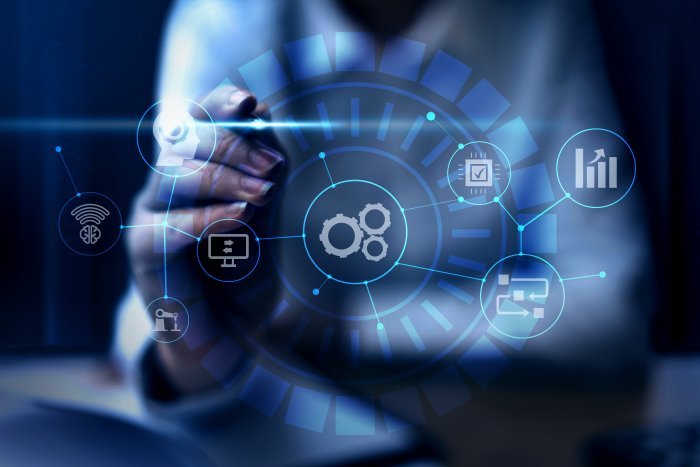
Regarding the metaverse, brands that have succeed in this bet will be able to create a unique digital relationship for each customer by feeding on data curation and access to NFTs.
Prouhet Loraine, Senior Innovation & Digital Consultant
Web 3.0 is the third evolution of the digital paradigm. Since 2000, Web 2.0 has been fundamental to tech giants such as Microsoft, Apple, Alphabet, Amazon and Samsung, as well as social platforms like Google, Facebook, Twitter, Instagram, Tencent and TikTok. Initially, digital was static, but it has since become participatory, focusing on user-generated content and data. However, it has also transformed into a Wild West where data exploitation equates to wealth and dominance for the big platforms.
During this period, tech giants played a crucial role in expanding digital usage by making technology more accessible and affordable. Social platforms, on the other hand, acted as catalysts for usage. These players have become essential in shaping the standards of the digital customer experience, emphasizing simplicity, immediacy, personalization and content amplification.
Beyond the customer experience, digital platforms and tech giants have exerted control over the online world, gradually establishing their dominance across the entire value chain.
Since 2018, digital regulations like the General Data Protection Regulation (GDPR) have addressed concerns about data privacy. Additionally, employees have raised issues regarding the limitations of the gig economy and the need for fair value sharing. Brands are also seeking a balanced relationship with tech giants, while customers strive to regain control over their personal data.
Web 3.0: Both a Philosophy and a Set of Technologies
Web 3.0 creates a new balance between players through a decentralized architecture that allows more control by users and the promise of sharing value with brands and creators.
Blockchain is now the most concrete example of this promise, allowing greater transparency and security of information. Simply put, it is a network of computers (servers, tablets, etc.) that collaborate to validate any new action performed on that network. On the blockchain, each computer has a copy of all the information stored on the network.
It is therefore almost impossible to forge, delete or add any data to this blockchain without the majority of the network being involved.
To foster collaboration and validate the addition of data to the blockchain, digital tokens (often in the form of cryptocurrencies) are used to reward validators for their actions. Another type of digital token, known as a non-fungible token, or NFT, is created and stored on the blockchain, providing a highly secure proof of ownership.
Expanding on this model of information sharing and the creation of NFTs, brands have the opportunity to offer unique, innovative and rewarding experiences that empower customers to have greater control over their personal data. This new business model draws inspiration from gaming mechanics, where player engagement is incentivized and valued, resulting in an experience-to-earn approach.
New Territory to Explore
Web 3.0 is now mainly aimed at an audience of experts (gamers and/or the tech-savvy). In this context of transformation, brands and tech players have a role to play. The former will democratize the use of tokens through concrete applications of remunerative mechanics, while the latter will accompany the creation of immersive worlds through their know-how and the distribution of AR/VR equipment accessible to the greatest number. Once these conditions are met and supported by the demographic transition, brands will be able to offer immersive experiences within virtual universes (metaverse), where hyper-personalization and engagement will be key. Brands that have succeeded in this bet will be able to create a unique digital relationship for each customer by feeding on data curation and access to NFT.
In parallel with the Web 3.0 evolutions and while waiting for the advent of the metaverse, the proto-metaverse (Decentraland, Roblox) developed by taking advantage of the characteristics of the blockchain. The protometaverse today has characteristics common to the metaverse, such as gamification, decentralization and social interactions, without being part of an immersive and interoperable environment.
Web 3.0 : A New Opportunity for Customer Relations
The widespread adoption of blockchain technology allows brands to explore diverse use cases, with a particular focus on non-fungible tokens (NFTs). These unique tokens link a product, such as a customer, to a specific identifier. NFTs are easily created by brands and readily accessible to customers, making them a compelling aspect of Web 3.0. Often associated with a digital wallet, like Metamask, NFTs can be downloaded and stored.
By launching NFTs associated with specific products, brands can offer a fresh approach to customer targeting, qualifying customers based on their interactions rather than relying on third-party cookies. Incentivizing these interactions with exclusive benefits tied to NFTs can strengthen customer engagement and establish a novel digital relationship centered around wallet identifiers and NFTs.
Non-fungible tokens present a unique opportunity for brands to establish a distinct customer-relationship channel. They can address customers directly, offering a multitude of benefits, verifying their identity, automating actions through smart contracts and collecting data with the individual's consent.
Building on this insight, telecom companies can leverage NFTs by associating them with contracts or products. The blockchain and token issuance process will certify ownership of their offerings and services, providing a foundation for a new customer relationship channel.
To illustrate this, a customer's purchase can be linked to an NFT. This NFT can gather product-related information, enabling the brand to collect customer-centric analytics. Telecom companies could even consider rewarding responsible customers by distributing "promotional" NFTs.
In the end, the customer experience promised by Web 3.0 extends beyond these examples.
[1]68% of the population is equipped with a mobile device in 2023, and 64.4% of the population is connected to the internet — source: Digital Report 2023, we are social & MeltWater
[2]4.76 billion social media users — source: Digital Report 2023, we are social & MeltWater





